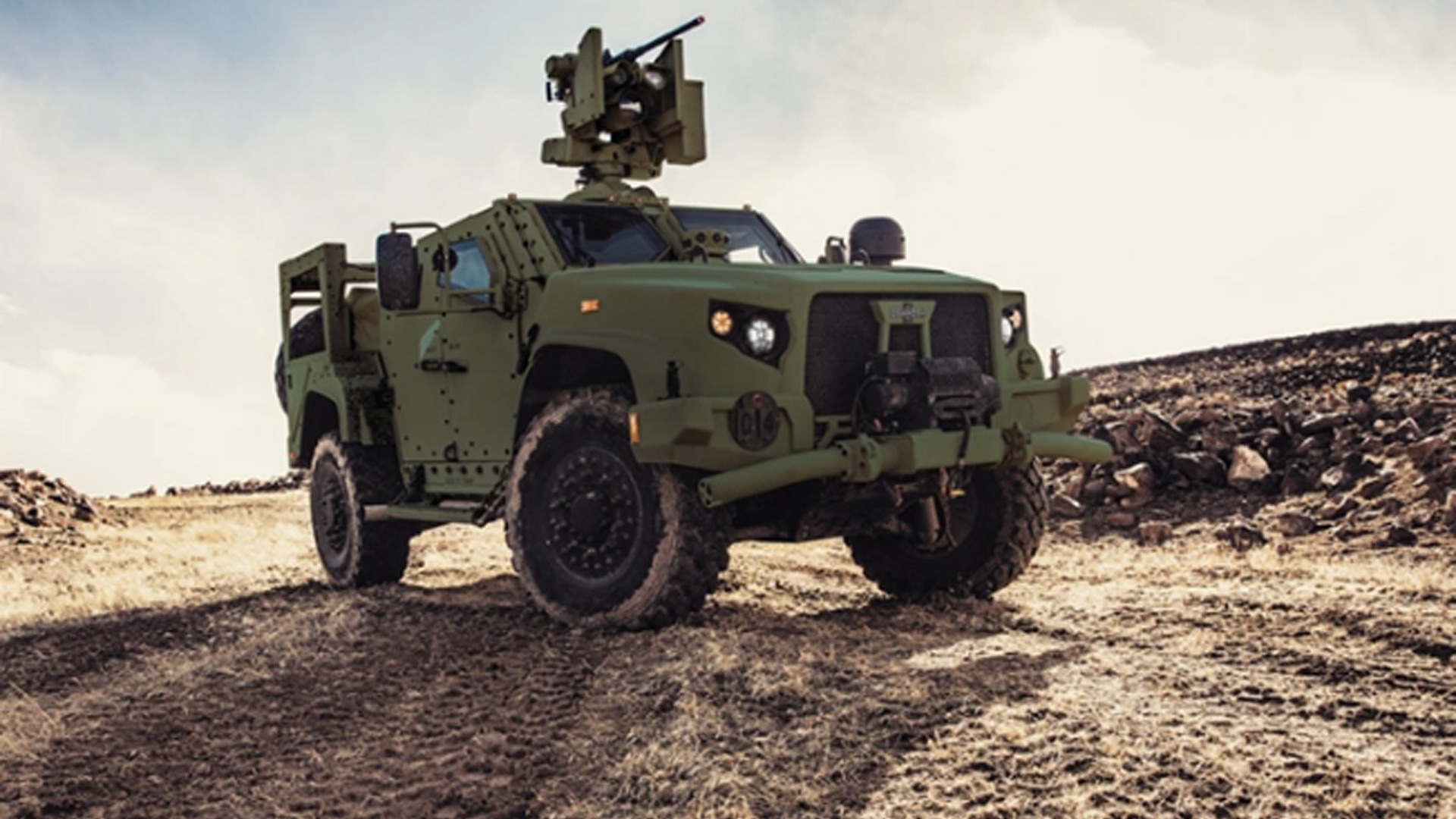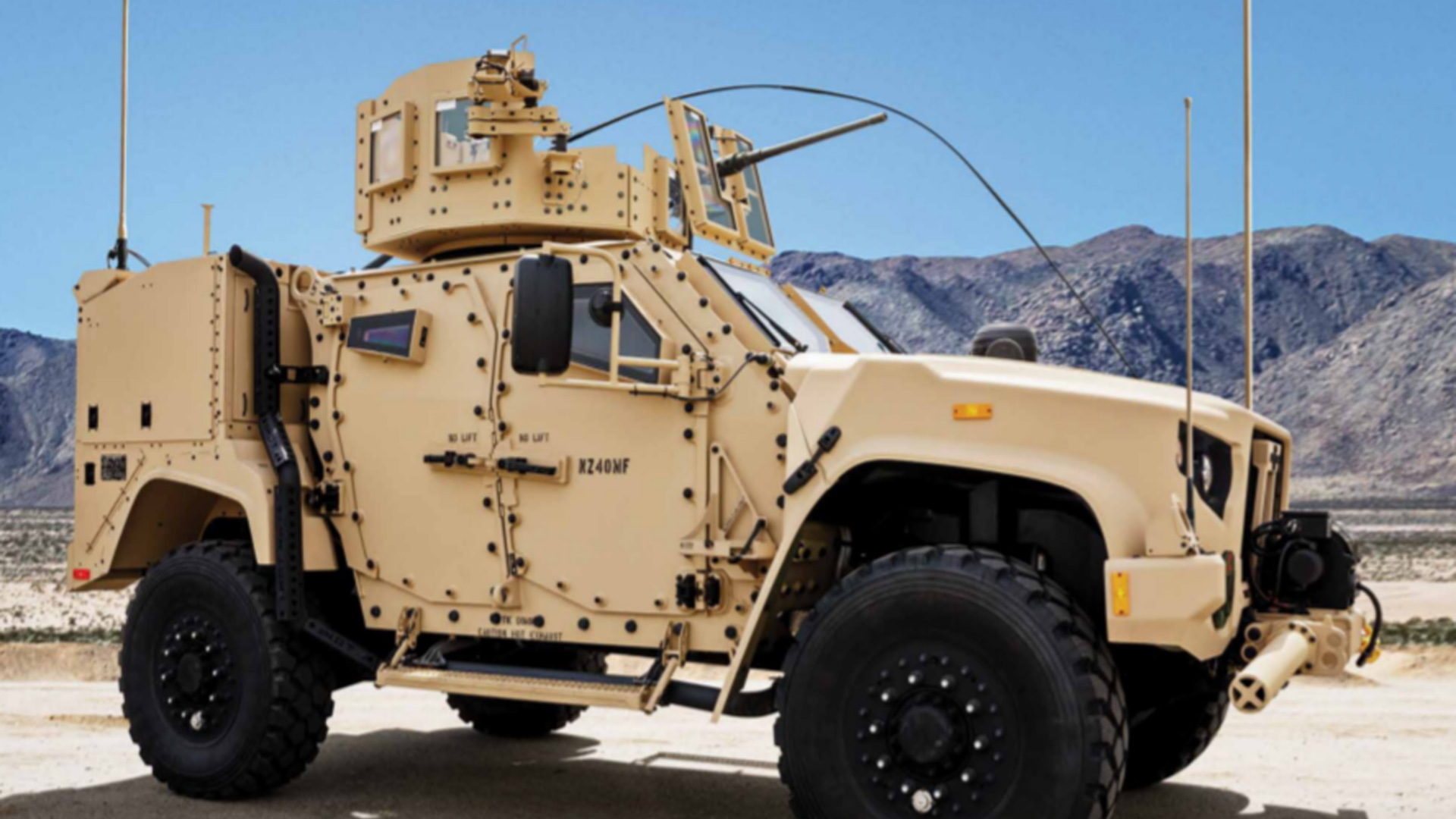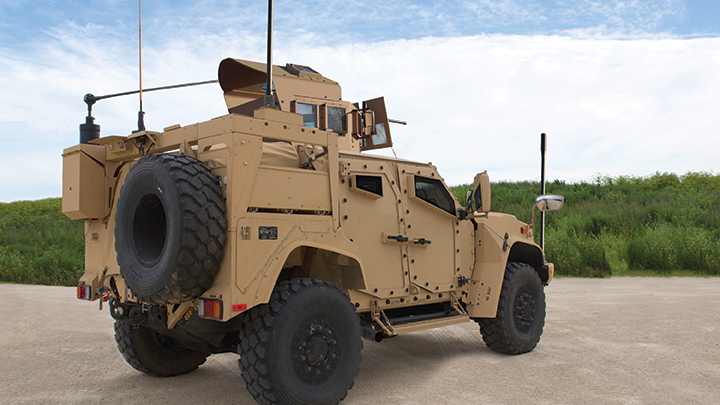It seems even the U.S. Army is going green, and we don't mean the color of its uniforms.
Oshkosh Defense, the maker of the Joint Light Tactical Vehicle (JLTV), the vehicle that was picked in 2015 to replace the Humvee, announced on Tuesday that military procurement services can now opt for hybrid power.
The standard JLTV is powered by a diesel V-8 that has some commonality with General Motors' Duramax line of diesel engines. The new hybrid version, dubbed the eJLTV, adds an electric drive system powerful enough to move the vehicle on its own. This enables silent operation, which can be important in military zones, though Oshkosh didn't say what kind of electric range soldiers can expect.
The electric drive system is powered by a lithium-ion battery that's kept charged by the diesel V-8. A full recharge takes just 30 minutes, according to Oshkosh. The eJLTV also features a power takeoff, which can prove handy out in the field. It offers up to 115 kilowatts of power.
Just like hybrids offered in showrooms, the eJLTV consumes less fuel than its non-hybrid counterpart. According to Oshkosh, fuel economy can improve by more than 20% by going the hybrid route.
The Army has already ordered several thousand units of the JLTV since the vehicle was unveiled in 2015, and is planning to order many more. According to John Bryant, president of Oshkosh Defense, the Army hasn't requested a hybrid option just yet but the company is ready to supply it should that situation change. Given the benefits of the technology, it's probably only a matter of time.
General Motors, via its GM Defense unit, has also developed electrified concepts for the Army to test. In 2016 it rolled out the Chevrolet Colorado ZH2 fuel-cell pickup. It also developed a similar vehicle based on the Silverado platform.
Fuel-cell vehicles offer an extra benefit over hybrids. Because there's no internal-combustion engine, their heat signatures are harder to track. Of course, the need to have a steady supply of hydrogen is still a hurdle, just as it is for civilian fuel-cell vehicles.






